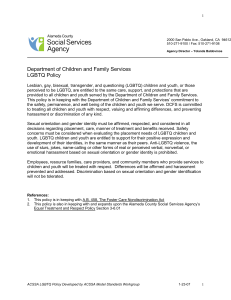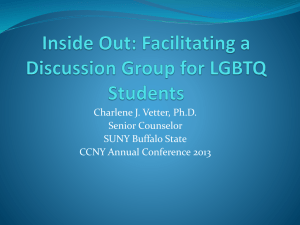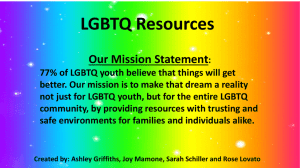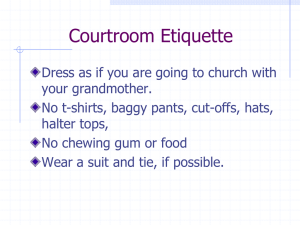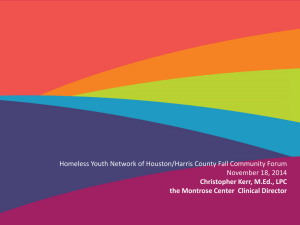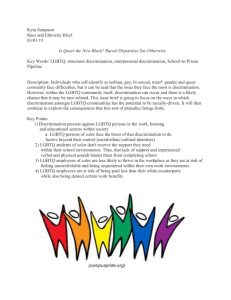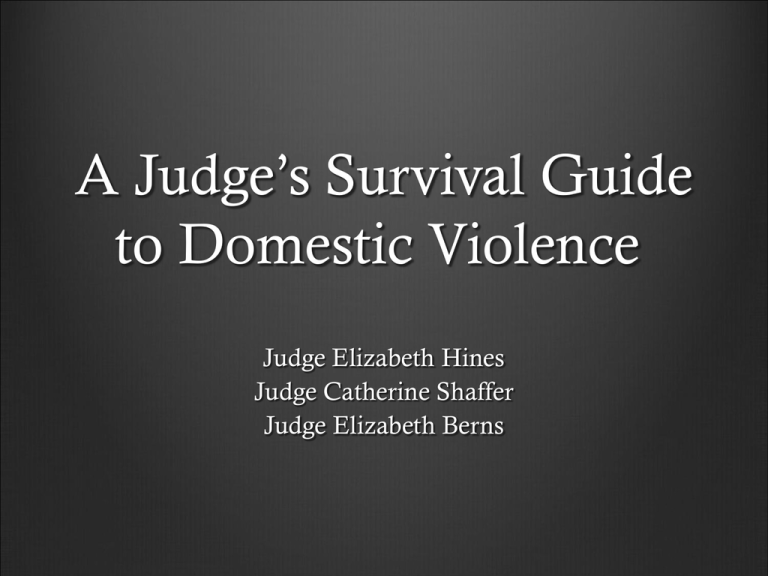
A Judge’s Survival Guide
to Domestic Violence
Judge Elizabeth Hines
Judge Catherine Shaffer
Judge Elizabeth Berns
Our Objectives
Learn to manage DV defendants, in and
out of the courtroom
Deploy best practices with substance
abuse and mental health issues
Understand and use best practices
handling cases involving DV in LGBTQ
relationships.
Dealing with Defendants
In Court
And
Out
Of
Court
DV Defendants: Your
Observations
Some Important Recurring
Issues
Lethality factors
No contact orders
Bail decisions
Courtroom Control
Crawford and 404(b) Issues
Lethality Factors
What are they?
How do they
affect your no
contact orders
and bail
decisions?
Courtroom Control
Some ideas
Your
thoughts?
DV Evidence
The Crawford Analysis
Dealing with “Prior Bad
Acts” in DV Cases
Crawford v. Washington
analysis
6th amendment in play?
Is the statement “testimonial?”
If so, did government produce the
declarant for cross examination?
If so, has the defendant been afforded
sufficient opportunity to cross examine?
Recognized Crawford
Exceptions
Statements to undercover officers
Excited utterances
Statement for purposes of medical
diagnosis/treatment
Statements by children to family
Business/public records
Statements made by a victim if defendant killed
victim to prevent that testimony
404(b) in DV Cases
Evidence of other
crimes, wrongs,
acts inadmissible
to “prove the
character of a
person to show
action in
conformity
therewith”
“Suspect in Arson
Had a History of
Domestic Violence”
Bases for Admissibility
Evidence of other
crimes, wrongs,
acts, may be
admissible –
To prove motive,
opportunity, intent,
plan, knowledge,
absence of mistake
or accident
May also be
admissible in DV
cases to show
Reasonable fear
Reasons for
recantation or
minimization
Why reporting was
delayed
Some Practice Tips
If possible, get briefing
Look at 404(b) case law and cite it
Balance probativeness versus danger of unfair
prejudice on record
Keep record of rulings
Limiting instruction very advisable, on
admission and in closing set
What about
the Kids?
Juggling
Conflicting
Orders
Kids in Court
The Defendant Out of Court
Questions to Ask about local
“DV Treatment” Programs
How to monitor and review
Co-occurring issues
Your Local “DV Treatment”
Program
Is it really just --
“Anger management”
Personal individual
counseling
Couples counseling
Some hallmarks of
helpful DV treatment
programs
Victim contact
Collateral source
checks
Handling cooccurring
treatment issues
Accountability in a
group setting
LOW OR NO CO$T
STRATEGIES
Recognize that proper handling of DV is
homicide prevention
Focus on victim safety
Expedite DV Court hearings (Rocket
Docket)
Conduct frequent court reviews to ensure
compliance
LOW OR NO CO$T
STRATEGIES
If possible, judge at pretrial keeps case for any
trial, sentencing, review
Educate courts staff on the importance of DV
cases
Use BIP that meets state standards (not anger
management)
Establish procedures to promptly enforce
conditions of bond and probation
LOW OR NO CO$T
STRATEGIES
Ban use/possession of firearms, ammunition, illegal
drugs and alcohol
Know and work with your local victim advocates
Improve cross-system communication and training
Seek out and attend DV trainings and share the
information
Take part in a coordinated community response
Effective Review with no Money:
Judge Shaffer’s Experience
Co-occurring Issues
Domestic Violence in the
LGBTQ Community
Understanding the Language
Recent Statistics
Abuser Tactics
Issues in the Courtroom
Understanding the Language
Identifying language can be affirmation.
Language use changes over time. What was
once a derogatory term may now be embraced
as an affirming one.
Avoid problematic or insulting terminology.
When in doubt, ask.
Language
L “Lesbian”
G “Gay”
B “Bisexual”
T “Transgender”
Q “Questioning, Queer, or
Genderqueer”
Language
“Sexual Orientation”
“Gender Identity”
“Gender Expression”
“Homophobia, Transphobia, and Heterosexism”
Statistics
U.S. Population Identifying as LGBTQ
About 3.5% of U.S. adults identify as lesbian,
gay, bisexual or transgender (2012)
Hawaii has 2nd largest population at 5.1 %
(D.C. has 10%)
National Youth Statistics:
5% to 10% of youth identify as LGBTQ
40% of homeless youth identify as LGBTQ
(2010)
National DV Statistics
Violence by an Intimate Partner: Women
In 2010, women suffering rape, other violence
and/or stalking by intimate partner during
lifetime:
43.8% of lesbians
61.1% of bisexual women
35.0% of heterosexual women
National DV Statistics
Violence by an Intimate Partner: Men
In 2010, men suffering rape, other violence
and/or stalking by an intimate partner during
lifetime:
26.0% of gay men
37.3% of bisexual men
29.0% of heterosexual men
Myths &
Stereotypes
“Violence between two men or two women is a ‘fight’
between equals.”
“If one person fights back, then it’s not abuse.”
“Women are not violent.”
“Lesbian relationships are based on equality -- lesbians
have ideal, loving relationships.”
“Domestic violence primarily occurs among LGBTQ
people who hang out at bars, are poor, or people of
color.”
“The law does not and will not protect victims of
same-sex domestic violence.”
Abusers Tactics
General Behaviors of Abusers
Using Coercion & Threats
Using Children
Using Economic Abuse
Isolation
Using Emotional Abuse
Minimizing, Denying, & Blaming
Abusers Tactics
Behaviors Unique to LGBTQ Abusers
Forcing sexual intercourse to prove the
domestic violence survivor a “true”
LGBTQ person
Hiding or destroying hormones (for
transgender survivors)
Saying all LGBTQ relationships “are like
this”
Accusing survivor of mutual abuse
More Behaviors Unique to
LGBTQ Abusers
Threats to “out” the survivor or disclose HIV status
to family, friends, or employer
Using sexual orientation to alienate domestic
violence survivor from family, community, and
organizations
Accusing survivor of being an unfit parent because
of HIV or LGBTQ status
Threats to “out” survivor to police or other
authorities to have children taken away
LGBTQ DV Issues
in Court
Minimal evidence
Lack of police reports and witnesses
Allegations of long-standing abuse but no
supporting records or evidence
Dual arrests
Cross-filed protection order petitions
Creating a Knowledgeable and
Compassionate Courtroom
Treat LGBTQ DV crimes as genderneutral
Abusers can be of either gender
Abusers may use tools other than
physical power to control partners
Understand the already-marginalized
LGBTQ community
Carefully consider protective order or
sentencing decisions
Creating a Knowledgeable and
Compassionate Courtroom (2)
Carefully consider protective order or
sentencing decisions
Understand that traditional safety
planning responses may take survivors
completely out of their communities
This can be less effective for LGBTQ
survivors
This can lead to further isolation
Creating a Knowledgeable and
Compassionate Courtroom (3)
Amend forms and procedures to allow
victims to seek legal relief without having to
“come out”
Educate all court personnel on how to
support access to justice for LGBTQ people
Establish & enforce rules regarding offensive
conduct & statements made by staff and
others in the courtroom


